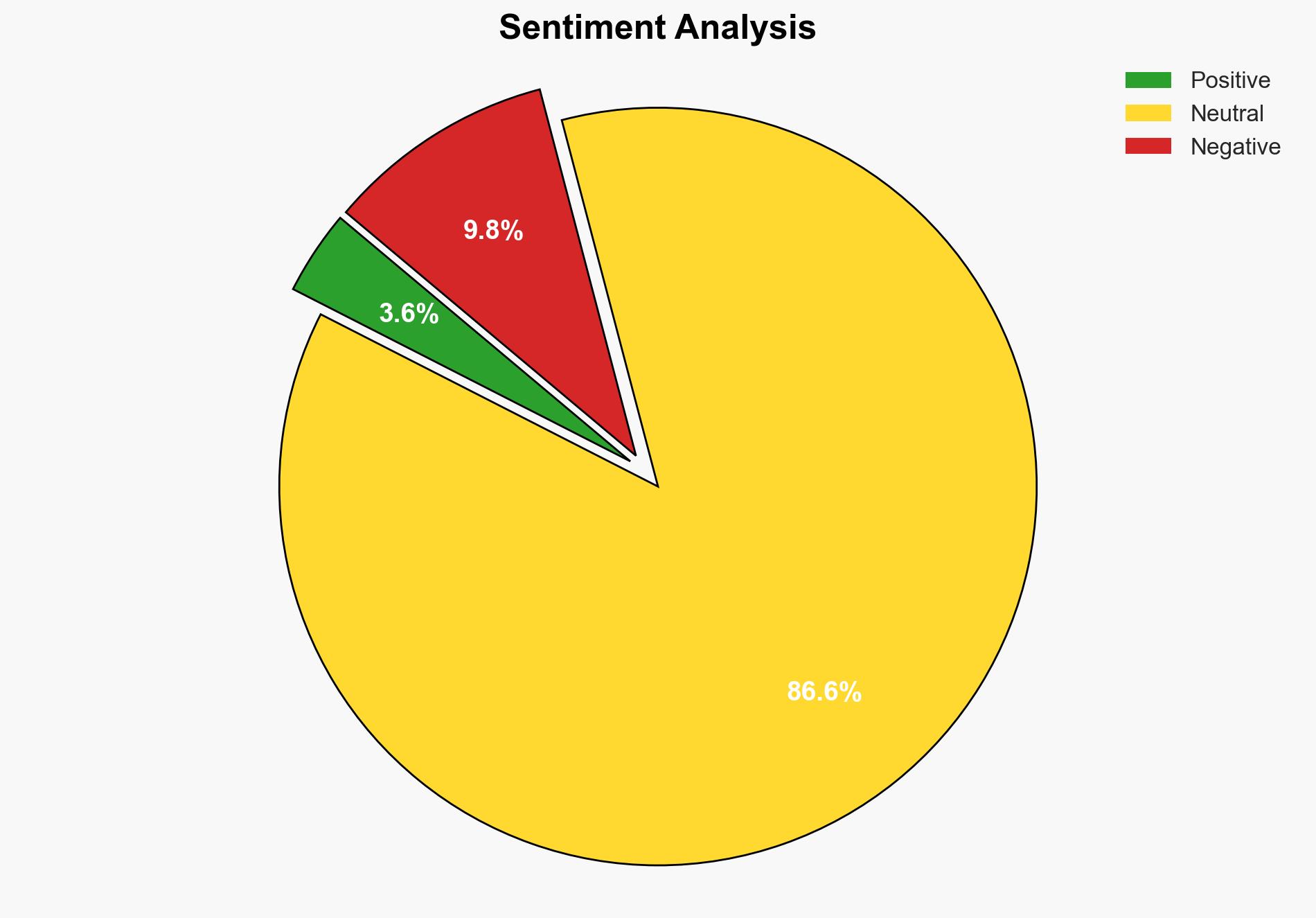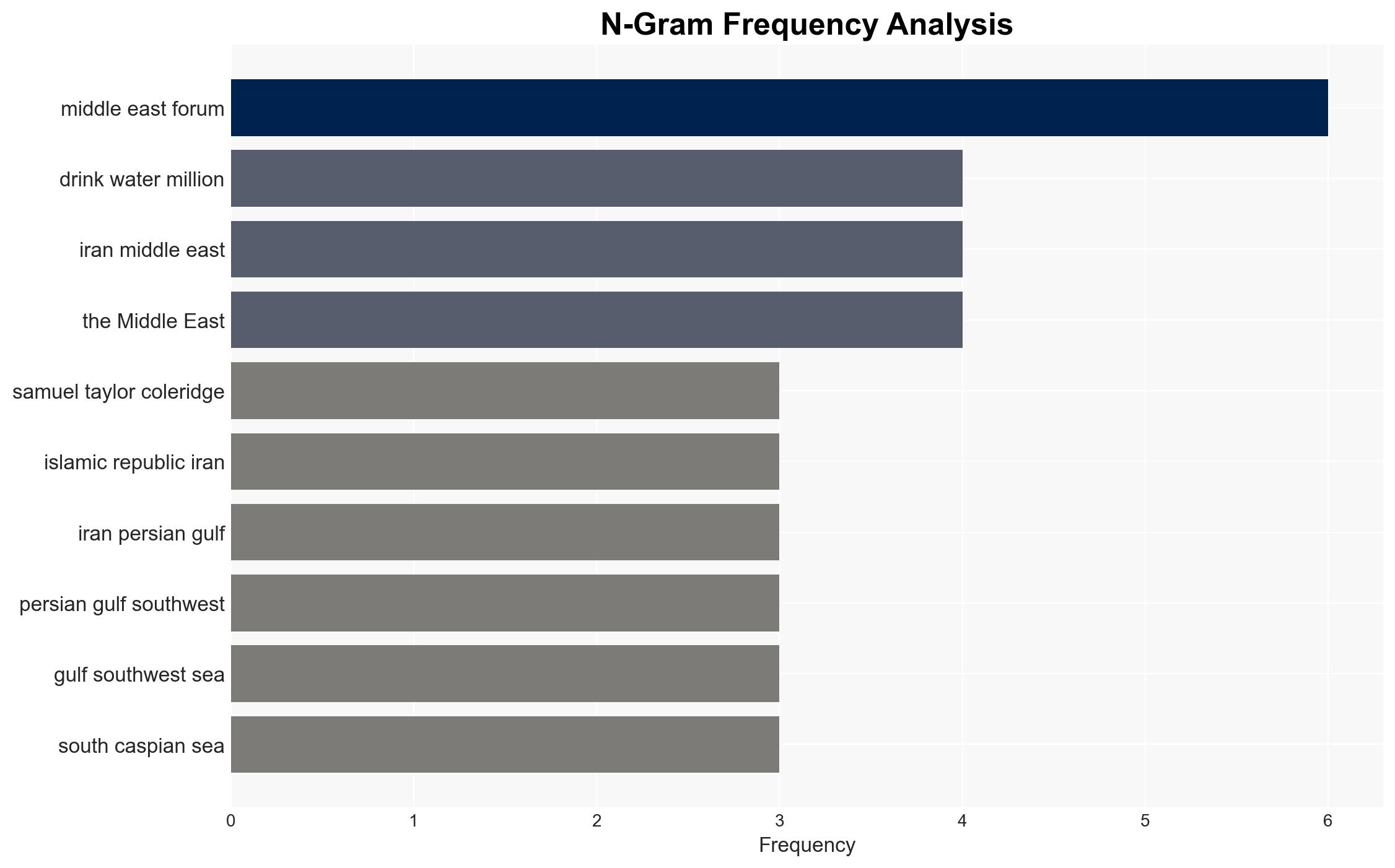How dry Iran – Israelnationalnews.com
Published on: 2025-11-19
AI-powered OSINT brief from verified open sources. Automated NLP signal extraction with human verification. See our Methodology and Why WorldWideWatchers.
Intelligence Report: Water Crisis in Iran
1. BLUF (Bottom Line Up Front)
The Islamic Republic of Iran is facing a severe water crisis, exacerbated by poor resource management and geopolitical tensions. The most supported hypothesis is that Iran’s prioritization of nuclear ambitions over sustainable water management has led to its current predicament. Confidence Level: High. Recommended action includes diplomatic engagement to encourage Iran to invest in water infrastructure and regional cooperation on water management.
2. Competing Hypotheses
Hypothesis 1: Iran’s water crisis is primarily due to mismanagement and prioritization of nuclear ambitions over critical infrastructure investments.
Hypothesis 2: External factors, such as alleged weather manipulation by Israel and regional climate conditions, are the primary drivers of Iran’s water crisis.
Assessment: Hypothesis 1 is more likely due to the consistent pattern of Iran’s investment in nuclear facilities over water infrastructure, as evidenced by the disparity in spending and technological advancements compared to its neighbors.
3. Key Assumptions and Red Flags
Assumptions: Iran’s government has the capacity to redirect resources towards water management if prioritized. Regional cooperation is feasible despite geopolitical tensions.
Red Flags: Potential bias in attributing blame to Israel without substantial evidence. Deception indicators include Iran’s narrative of external blame to deflect from internal policy failures.
4. Implications and Strategic Risks
Political instability could arise from public dissatisfaction with resource allocation. Economic risks include further degradation of agricultural productivity. Cyber threats may emerge if tensions with Israel escalate. Informational risks involve propaganda campaigns to shift blame externally.
5. Recommendations and Outlook
- Encourage international diplomatic efforts to facilitate dialogue on water resource management in the region.
- Promote investment in modern desalination technology and infrastructure in Iran.
- Best-case scenario: Iran collaborates with neighbors on water management, reducing tensions and improving resource allocation.
- Worst-case scenario: Continued mismanagement leads to severe humanitarian crises and regional instability.
- Most-likely scenario: Incremental improvements in water management with ongoing geopolitical tensions.
6. Key Individuals and Entities
Supreme Leader Ali Khamenei, President of Iran, IPT Political Correspondent A.J. Caschetta, Middle East Forum.
7. Thematic Tags
Regional Focus, Regional Focus: Middle East, Iran, Water Management, Geopolitical Tensions, Nuclear Ambitions
Structured Analytic Techniques Applied
- Causal Layered Analysis (CLA): Analyze events across surface happenings, systems, worldviews, and myths.
- Cross-Impact Simulation: Model ripple effects across neighboring states, conflicts, or economic dependencies.
- Scenario Generation: Explore divergent futures under varying assumptions to identify plausible paths.
Explore more:
Regional Focus Briefs ·
Daily Summary ·
Support us





